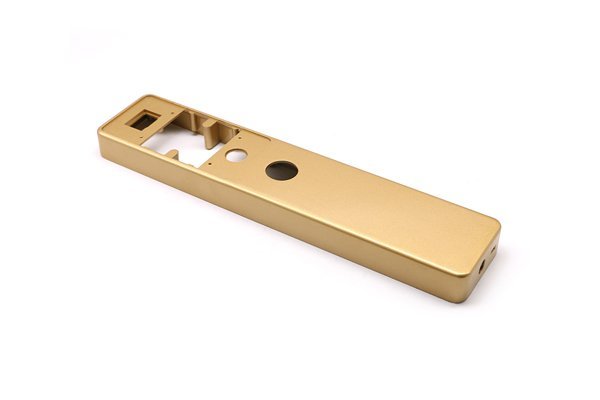: A Surprising Fact About Metals in Transport
Did you know that nearly 75% of the total weight of a vehicle comes from its structure and components, most of which are made from metal? This startling statistic not only highlights the significance of metal in the transportation industry but also underscores the vital role of advanced manufacturing techniques, such as CNC machining. With the demand for lightweight, durable, and cost-effective materials ever-increasing, understanding how different metals perform in transportation applications becomes crucial for manufacturers and engineers.
In the dynamic world of transportation, from automobiles and aerospace to marine vessels and railways, the selection of the right metal can make a significant difference in performance, safety, and efficiency. This blog will provide an in-depth exploration of various metals, focusing on their properties, benefits, and applications in transportation, all through the lens of CNC machining. We will also discuss best practices, innovations in metalworking, and solutions to common challenges in production.
Section 1: The Basics of CNC Machining in Transportation
1.1 What is CNC Machining?
CNC (Computer Numerical Control) machining is a subtractive manufacturing process that uses computerized controls to manipulate machinery and tools. It can produce precise and complex components from a variety of materials, including metals, plastics, and composites. In the transportation industry, CNC machining is particularly valued for its ability to deliver high accuracy, repeatability, and efficiency.
1.2 The Importance of Material Selection in Transportation
Choosing the right metal for transportation applications is critical. The performance of a vehicle or vessel can be significantly affected by the material used, as it influences factors such as weight, strength, corrosion resistance, and machinability. By understanding the characteristics of different metals, manufacturers can make informed decisions that optimize performance and remain cost-effective.
1.3 Properties of Metals Used in Transportation
When evaluating metals for CNC machining in transportation, several fundamental properties are essential to consider:
Section 2: Common Metals Utilized in Transportation and Their Performance
2.1 Aluminum
2.1.1 Properties and Benefits
Aluminum is one of the most widely used metals in transportation due to its excellent strength-to-weight ratio, corrosion resistance, and machinability. In recent years, advancements in aluminum alloys have further improved its performance, making it an attractive option for manufacturers.
2.1.2 Applications
Aluminum can be found extensively in automotive components, aircraft structures, and lightweight marine vessels. The ability to produce complex geometries through CNC machining allows engineers to optimize designs for both performance and fuel efficiency.
2.2 Steel
2.2.1 Types of Steel
Steel remains a favored material for many transportation applications, given its robustness and durability. Key types include:
2.2.2 Applications
Steel is primarily utilized in the chassis, frames, and structural components of vehicles. Its ability to endure stress and impact makes it an excellent choice for safety-critical applications.
2.3 Titanium
2.3.1 The Gold Standard for Aerospace
Titanium has gained popularity in the aerospace sector due to its remarkable strength-to-weight ratio and ability to withstand high temperatures. Although more costly than aluminum or steel, its benefits in weight savings and performance justify its use in critical applications.
2.3.2 Applications
In transportation, titanium is frequently found in aircraft engine components, fasteners, and structural elements. CNC machining allows for the customization of complex shapes required for enhanced aerodynamic performance.
2.4 Magnesium
2.4.1 Lightweight Champion
Magnesium is a lightweight metal that offers considerable weight-saving potential for transportation applications. It is particularly helpful in reducing overall vehicle weight, which in turn improves fuel efficiency.
2.4.2 Applications

Commonly used in the automotive industry, magnesium alloys can be found in engine blocks, wheels, and transmission cases. CNC machining facilitates the manufacture of intricate components that require precision and consistency.
2.5 Copper and Copper Alloys
2.5.1 Conductivity and Strength
While not as prevalent as other metals, copper and its alloys (like brass and bronze) have critical applications in transportation, particularly for their excellent electrical conductivity and resistance to corrosion.
2.5.2 Applications
Copper is often used in electrical wiring and components, including connectors and circuit boards in vehicles. Copper alloys find their place in various automatic parts due to their machinability and strength.
Section 3: Addressing Challenges in CNC Machining for Transportation Applications
3.1 Machining Difficulties
Each metal presents unique challenges during CNC machining, including:
3.2 Solutions for Effective Machining
3.2.1 Tooling Innovations
Investing in high-performance cutting tools made from materials like carbide or ceramics can significantly enhance machining efficiency. Employing specialized tools for hard materials can reduce wear and maintain precision.
3.2.2 Optimized Cutting Conditions
Utilizing advanced CNC machines equipped with variable speed and feed mechanisms can improve surface quality and decrease cycle times. It allows for better material handling and can help avoid overheating.
3.2.3 Implementing Automation
Automation through CAD/CAM technology can streamline the design and production processes, yielding higher accuracy and repeatability while reducing human error.
3.3 Quality Control in Machining
Extending beyond machining, implementing rigorous quality control processes is crucial. Techniques such as non-destructive testing (NDT) can help assess a part’s integrity without damaging it. Regular inspection ensures components meet precise specifications and handle the demands of their respective applications.
Section 4: Case Studies: Successful Applications of CNC Machining in Transportation
4.1 Automotive Industry
4.1.1 Lightweighting Initiatives
A well-known automotive manufacturer leveraged CNC machining to create a new range of fuel-efficient vehicles. By utilizing aluminum alloys for body panels, they significantly decreased weight, leading to enhanced fuel economy without sacrificing safety and performance.
4.2 Aerospace Industry
4.2.1 Engine Component Innovation
An aerospace company faced challenges managing the weight of engines while enhancing performance. By incorporating titanium components through CNC machining, they achieved a revolutionary reduction in weight, which positively impacted fuel consumption during flight.
4.3 Marine Applications
4.3.1 Corrosion-Resistant Solutions
With the adverse effects of marine environments in mind, manufacturers turned to stainless steel components machined via CNC technology for new vessels. This approach ensured high resistance against corrosion while maintaining structural integrity.
: The Path Forward
As we’ve explored throughout this blog, the selection of metals for CNC machining in transportation applications is not only a matter of preference; it is a critical decision that influences design, safety, and efficiency. From lightweight aluminum and robust steel to the unique advantages of titanium and magnesium, each metal offers distinct properties that can be leveraged for improved performance.
Navigating the challenges of CNC machining—such as heat sensitivity, material toughness, and machining difficulties—is vital for manufacturers who wish to enhance their processes. By adopting advanced tooling, optimizing cutting conditions, and implementing automation and quality control measures, the industry can overcome obstacles to produce high-quality, efficient, and reliable transportation solutions.
In summary, staying informed about the properties and performance of various metals—and understanding their implications on CNC machining—ensures that stakeholders can make decisions that facilitate innovation and progress. For manufacturers, engineers, and industry professionals alike, this blog serves as a valuable resource and a call to action for continuous improvement in this vital sector. The future of transportation depends on material science and engineering, and your role in that future is significant.
Let’s think critically about the metals we choose and the processes we employ, for these choices shape not only our industry but the way we move forward into a sustainable, efficient future.






